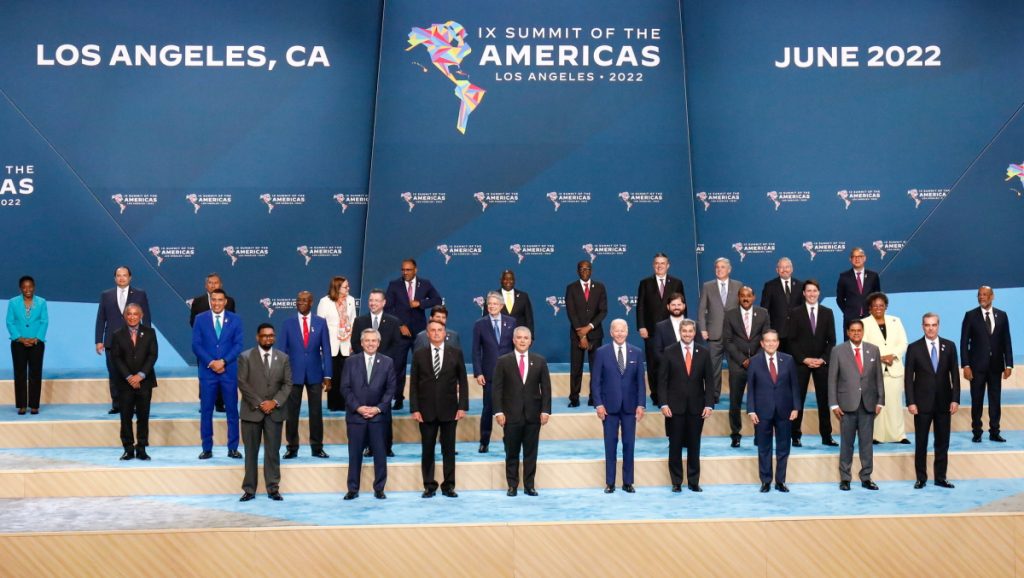To say that the Organization of American States’ Summit of the Americas event held in Los Angeles from June 6 to June 10 was a debacle, would be an understatement.
Initially, countries like Cuba, Venezuela, and Nicaragua were banned from attending the event. This caused Mexican President Andrés Manuel López Obrador to protest and not attend. México was followed by presidents Luis Arce of Bolivia, Nayib Bukele of El Salvador, Alejandro Giammattei of Guatemala, and Xiomara Castro of Honduras in refusing to participate in the summit.
The ostensive mission of the event was the promotion of democracy. Additionally, migration, corruption, and climate change were supposed to be addressed at this event.
However, Richard Haas, the president of the Council on Foreign Relation tweeted on June 7, 2022:
“The Summit of the Americas looks to be a debacle, a diplomatic own goal. The US has no trade proposal, no immigration policy, & no infrastructure package. Instead, the focus is on who will & will not be there. Unclear is why we pressed for it to happen.”
The latest egg that the US laid at the Summit of the Americas shows that the US’s hegemony in Latin America is gradually eroding. The OAS was originally formed in 1948 to foster cooperation among nations and counter the influence of the Soviet Union in the Western Hemisphere.
Now, the US must come to grips with the novel challenge of an ascendant China in its backyard. China has flexed its muscles economically in Latin America over the past few decades. After China added Panama into its Belt & Road Initiative in 2017, Latin America quickly became a region of interest for China. The East Asian giant has continued making a splash in 2022, with Argentina becoming the latest Latin American country to join the BRI.
According to Andrés Sebastián Díaz Ponce of Impunity Observer, “Chinese investment in infrastructure and strategic cooperation in the region is also growing exponentially.” China’s increased economic intercourse with Latin American countries has already made it surpass the US as the primary trading partner for Argentina, Brazil, Chile, and Peru. The neoliberal think tank Atlantic Council projects that trade with China will comprise 15% to 24% of total commerce in Latin America by 2035.
It’s becoming clear that the US is slowly losing control of its own backyard. Years of lecturing other countries for their democratic deficiencies, failed regime change attempts, and the US’s growing instability at home are all factors making nations wary of entering entangling alliances with the US.
In a similar token, the US’s over-extended geopolitical priorities have allowed its rivals such as Russia, China, and Iran to respond in kind by spreading their influence in Latin America. The US will ultimately be faced with tough decisions throughout the 21st century as its fiscal situation deteriorates, social problems begin popping up left and right, and new powers emerge on the world stage to reshape the world order.
With all these factors in mind, US policymakers must recognize that there are hard limits to the country’s domestic and international ventures. Sacrifices will ultimately have to be made, especially on the foreign policy front.
If the US wants to prevent further debacles in the Western Hemisphere from occurring, it will need to pursue a retrenchment of sorts where it withdraws from Europe, the Middle East, and East Asia and places its military assets at the southern border and its coastlines. On top of that, it will need to rethink its traditional foreign policy approach with Latin America. To fix its image and patch up its relations in the region, the US will need to promote more sustainable trade and investment opportunities with Latin American nations.
More importantly, the US will need to abandon its overzealous regime change efforts and punitive military actions and pursue more productive diplomatic efforts to reduce tensions in the region. To be sure, maintaining a Monroe Doctrine in the Western Hemisphere makes sense to prevent external actors from setting up shop and potentially destabilizing the region.
Though the US should avoid micromanaging the domestic affairs of Latin American nations and concede that not all countries in the region will fully embrace liberal democracy. As long as trade, mutual cooperation, and respect for national sovereignty become the norm, the region will prosper.
However, the first step in reaching this vision for the region will require the US to give up its foreign policy projects outside of the Western Hemisphere. From there, it will be able to fully address the many challenges it faces in Latin America.


